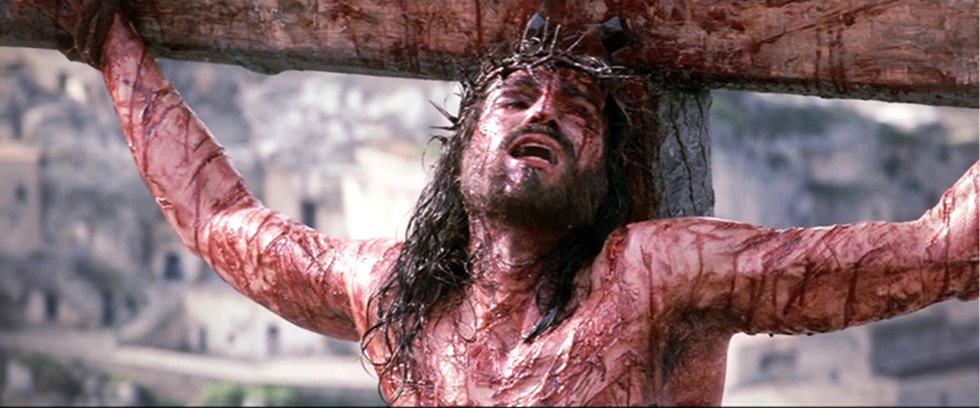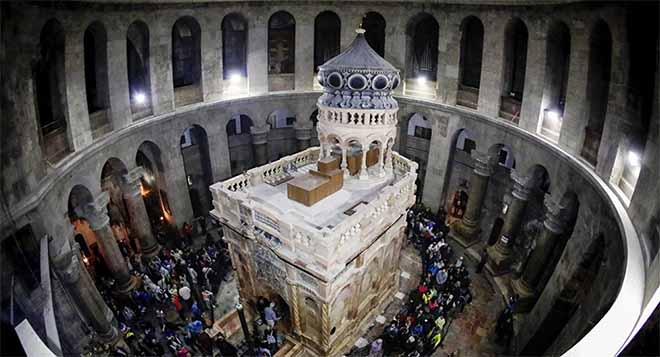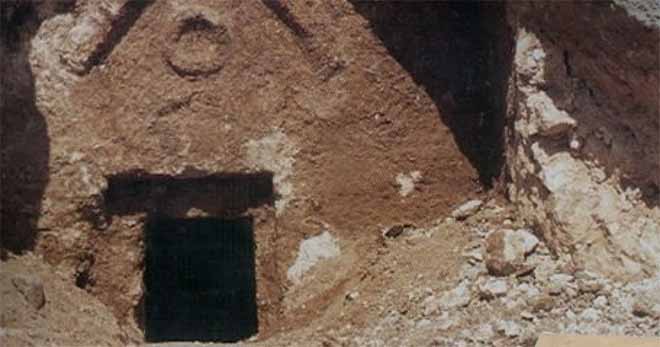Talpiot The Location of Jesus Christ Burial Tomb ?
The Body of Christ at Talpiot ?

In 325, following Christian conversion of Roman emperor Constantine the Great, very large construction works were undertaken in Golgotha, alleged place of the crucifixion of Jesus Christ, in order to demolish the Byzantine capitol and replace it with a monumental catholic chapel, the Church of the Holy Sepulchre. Romans then claimed to have found the true location of the tomb of Jesus Christ and pieces of the True Cross used to kill him under the rubble of the capitol. The story does not tell how they arrived at this conclusion and one can only suspect the presence of epitaphs left by Catholicism pioneers.
Passion of the Christ and the stories of the Bible

In the Bible and the Gospels, Pontius Pilate, procurator of the Sanhedrin, condemns under the pressure of the clergy Jesus Christ to be crucified on the cross for having uttered seditious teachings. Also according to the Bible, on Good Friday, Easter Eve, Jesus and two scoundrels are carried out of Jerusalem and supplicated on Golgotha Hill. After his death, the body of Jesus Christ is recovered and washed by Joseph of Arimathea who collects drops of his blood in the Holy Grail and wraps it in a cloth, the Shroud of Christ. Joseph of Arimathea then buries the body of Jesus in a Golgotha Jewish tomb which he closes with a heavy stone. On the morning of the Sunday following the crucifixion of Jesus, embalmers find his grave empty and open. As he foretold his disciples, Jesus Christ has resurrected. Forty days later, after many appearances and one last meal, Jesus rises to the sky surrounded by a big cloud.
The Church of the Holy Sepulchre

The Church of the Holy Sepulchre, built on the spot where Jesus Christ was persecuted at Golgotha, is one of the most symbolic monuments of all Christianity. Annals report that Byzantine Empress Helena, mother of Emperor Constantine the Great, would have ordered excavations around Jerusalem which would have allowed the discovery of a tomb (an Arcosolium), presumably the one used by Joseph of Arimathea to bury Jesus' body. An anonymous author of the 15th century also claims that Helena would've found and authenticated a sample of the True Cross and ordered her son to build a religious temple there, inaugurated in 335, at the place of the Passion of the Christ. Was it the real tomb of Jesus location ?
Talpiot's tomb

In the 80s, blasting began on a Jerusalem Talpiot hill allowing Amos Kloner to discover a tomb containing ten ossuary dating from the first century, that is to say the time of Jesus. Even more intriguing, the tombs contained Aramaic epitaphs that have since been partly deciphered. It took more than a decade for Hebrew archeologist Levi Yizhaq Rahmani to decipher those ancient signs, some of which read Jesus, son of Joseph and Judas, son of Jesus. Others would be translated by Mary, Jose and Matthew. Although sensational in nature, the story stayed in the shadows and some historians argue that these names were very common at that time but for film director Simcha Jacobovici, it would rather be a vast plot aimed at hiding a discovery of paramount importance for Christian religion.
The Lost Tomb of Jesus
In a 2007 documentary by famous Canadian director James Cameron (Titanic) aired on the Discovery Channel, Jacobovici exposes his thesis that Talpiot's tombs would've contained the body of Christ and members of his entourage but claims that the truth would be skirted to the general public. Jacobovici bases his hypothesis on a series of investigations and blood tests demonstrating beyond any doubt that the DNA of a woman found in one of Talpiot's tomb is different from that of Jesus. He concludes that the woman in question would be the spouse of Christ, Mary Magdalene according to the Gospel of Philip. The theory of Simcha Jacobovici is widely criticized since it calls into question the very foundations of Christian ideologies that want Jesus Christ to have resurrected two days after his crucifixion and ascended to heaven forty days later.
Inconclusive evidence
Looking more closely, one finds many discrepancies between the Bible's text and Jacobovici' thesis, the most potent one being the distance separating Talpiot's tomb from Golgotha hill. According to sacred texts, Joseph of Arimathea buried Jesus Christ in a tomb near the site of his crucifixion while Talpiot is located several kilometers away from the area. The Bible also mentions a huge circular rock used to close the tomb while Talpiot's is modest and square. Epitaphs bring little more answers than kinship ties between the various individuals who remain mysterious. All evidence is in fact based on the supposed presence of Mary Magdalene in the tomb which is easily demolished by simple interpretation of epitaphs which according to experts rather means Mariam and Mara. In addition, biblical texts portray Jesus Christ as concubine. Will Jesus tomb true location one day be found ?









































































































































































































































































































































